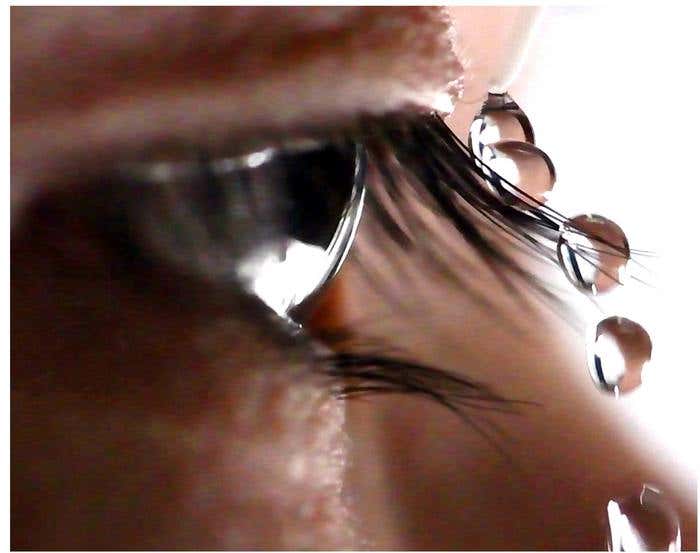Intense exercise can suppress appetite in healthy humans, study finds
High-intensity workouts suppress hunger hormone ghrelin, with greater effects in females—promising insights for appetite control strategies.

Research reveals that high-intensity exercise may help reduce hunger levels. (CREDIT: iStock)
Since its discovery in 1999, ghrelin—commonly known as the “hunger hormone”—has revealed its influence across many biological functions, from energy balance and immune health to sleep and memory.
Ghrelin exists in two main forms: acylated ghrelin (AG), which drives hunger, and deacylated ghrelin (DAG), which was initially thought to be inactive. DAG, though less abundant, has distinct biological effects, binding to a receptor separate from AG and demonstrating independent physiological actions.
In recent years, research has honed in on ghrelin's role in appetite, especially in relation to exercise intensity and its potential to help control weight. While AG tends to stimulate appetite in both humans and animals, DAG either suppresses or has little impact on appetite. This difference between the two forms has led scientists to examine how each affects hunger, especially during and after exercise.
Exercise, particularly at high intensity, can significantly suppress appetite in both healthy individuals and those with obesity. Yet, studies on the link between exercise, ghrelin levels, and appetite have produced inconsistent results. This inconsistency likely stems from multiple variables, such as the exercise dose, sex, feeding states, and differences in measured ghrelin isoforms. Complicating matters further, most research participants have been young, healthy men, limiting broader applications of the findings.
Aiming to uncover practical applications for appetite control, researchers have begun to examine the right "dose" of exercise needed for hunger suppression. Findings indicate that lactate—a byproduct of intense exercise—plays a critical role in ghrelin regulation.
A study led by Vanderheyden explored lactate’s impact on AG suppression by using sodium bicarbonate to elevate blood lactate levels. The results showed that increased lactate levels following intense exercise led to reduced AG and appetite, underscoring the potential of vigorous exercise to help control hunger.
Moreover, a recent meta-analysis supported these findings, noting that higher-intensity exercise generally suppresses all forms of ghrelin. Still, most studies in this analysis involved moderate-intensity workouts among healthy young males, indicating a need for more diverse participant groups and exercise intensities to confirm these results across populations.
Related Stories
In addition to exercise intensity, sex differences also affect ghrelin levels, although findings have varied. Research indicates that females generally have higher baseline levels of both AG and DAG than males, potentially influenced by estrogen. However, studies on exercise-induced ghrelin responses show inconsistent results between sexes, with most protocols only employing one level of exercise intensity.
To address this gap, a recent study in the Journal of the Endocrine Society specifically examined how exercise intensity affects AG and DAG levels in men and women. The research involved eight men and six women who fasted overnight and then performed exercises of varying intensity, with blood lactate levels measured to gauge exercise effort. The participants reported their appetite levels following each workout session.
The study revealed that females had higher total ghrelin levels before exercise than males, but their ghrelin levels, particularly AG, dropped significantly after high-intensity exercise. In contrast, moderate-intensity exercise either did not affect ghrelin levels or led to a slight increase, suggesting that workouts above the lactate threshold may be necessary to suppress ghrelin effectively.
Lead researcher Kara Anderson, Ph.D., of the University of Virginia, stated, “We found that high-intensity exercise suppressed ghrelin levels more than moderate-intensity exercise. In addition, individuals reported feeling ‘less hungry’ after high-intensity exercise compared to moderate exercise.”
Anderson emphasized the importance of tailoring exercise intensity to personal goals, suggesting, “Exercise should be thought of as a ‘drug,’ where the ‘dose’ should be customized based on an individual’s personal goals.”
Beyond Anderson, several researchers, including Tana Mardian, Benjamin Stephenson, Emily Grammer, Macy Stahl, Nathan Weeldreyer, and Sibylle Kranz of the University of Virginia, as well as Zhenqi Liu, Kaitlin Love, Jason Allen, and Arthur Weltman from the University of Virginia Health System, contributed to this study. Their findings open new pathways for weight loss interventions, especially those targeting appetite suppression through customized exercise regimens.
Despite these promising results, the researchers noted the need for further study to fully understand the effects of exercise on ghrelin across different sexes and fitness levels. The current data is limited to a small sample, and future research with more diverse groups and exercise regimens will be necessary to develop practical, individualized approaches to hunger management.
Ghrelin’s discovery has broadened our understanding of the complex hormonal controls governing appetite and energy regulation. As this body of research grows, it may soon be possible to tailor exercise prescriptions as precisely as medication, using high-intensity workouts as a natural tool to help curb appetite and support weight management goals.
Note: Materials provided above by The Brighter Side of News. Content may be edited for style and length.
Like these kind of feel good stories? Get The Brighter Side of News' newsletter.
Joseph Shavit
Head Science News Writer | Communicating Innovation & Discovery
Based in Los Angeles, Joseph Shavit is an accomplished science journalist, head science news writer and co-founder at The Brighter Side of News, where he translates cutting-edge discoveries into compelling stories for a broad audience. With a strong background spanning science, business, product management, media leadership, and entrepreneurship, Joseph brings a unique perspective to science communication. His expertise allows him to uncover the intersection of technological advancements and market potential, shedding light on how groundbreaking research evolves into transformative products and industries.



